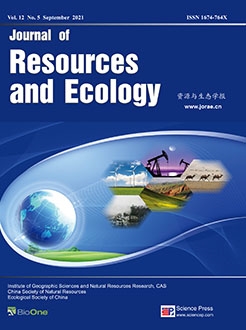Tourists are the main body of tourism activities, and studying the environmental cognition of tourists is beneficial for the environmental management of scenic spots. In this article, data obtained by questionnaire were used to compose a data matrix of 169×10 dimensions, and the cognitive level of ecotourists for the tourism environment was measured by two-way indicator species analysis (TWINSPAN) and detrended correspondence analysis (DCA) in Luya Mountain Nature Reserve. This analysis revealed three main points. (1) TWINSPAN divided all the samples into the strict environment protection type, the ordinary environment protection type, the occasional environment protection type, and the natural enjoyment type. Both the strict and ordinary environment protection types agreed with biocentrism and had a consciousness regarding the protection of nature, but the former advocated that tourism activities should be restricted in nature reserves, while the latter did not agree with restrictions on tourism activities. The occasional environment protection types denied biocentrism; on the one hand, they thought that nature should serve human beings, but on the other hand, they showed a tendency toward environmental protection. The natural enjoyment type argued that natural resources should be maximized to meet human needs. (2) There were significant correlations between the first axis of the DCA and gender, age, education, number of trips, and cognition of nature reserve function, and the second axis of DCA was significantly correlated with gender, age, and education level. Under the impact of all the factors in the DCA figure, ecotourist types transitioned gradually from the first type to the second, the third, and the fourth types along the diagonal line, and accordingly, their cognitive level for the tourism environment was reduced slowly. (3) For nature reserves, the strict environment protection type had 74 people, who was the most popular. The ordinary and occasional environment protection types had 43 people and 31 people, respectively, who should be strived to raise environmental awareness. The natural enjoyment type had 21 people, who must be systematically educated.
How to translate text using browser tools
1 September 2021
Measurements of the Cognitive Level of Ecotourists for the Tourism Environment in the Mountain Resorts
Cheng Jinhong,
Li Shuxiao,
Cheng Zhanhong
ACCESS THE FULL ARTICLE
<
Previous Article
|
ecotourists
Luya Mountain
the cognitive level for tourism environment






